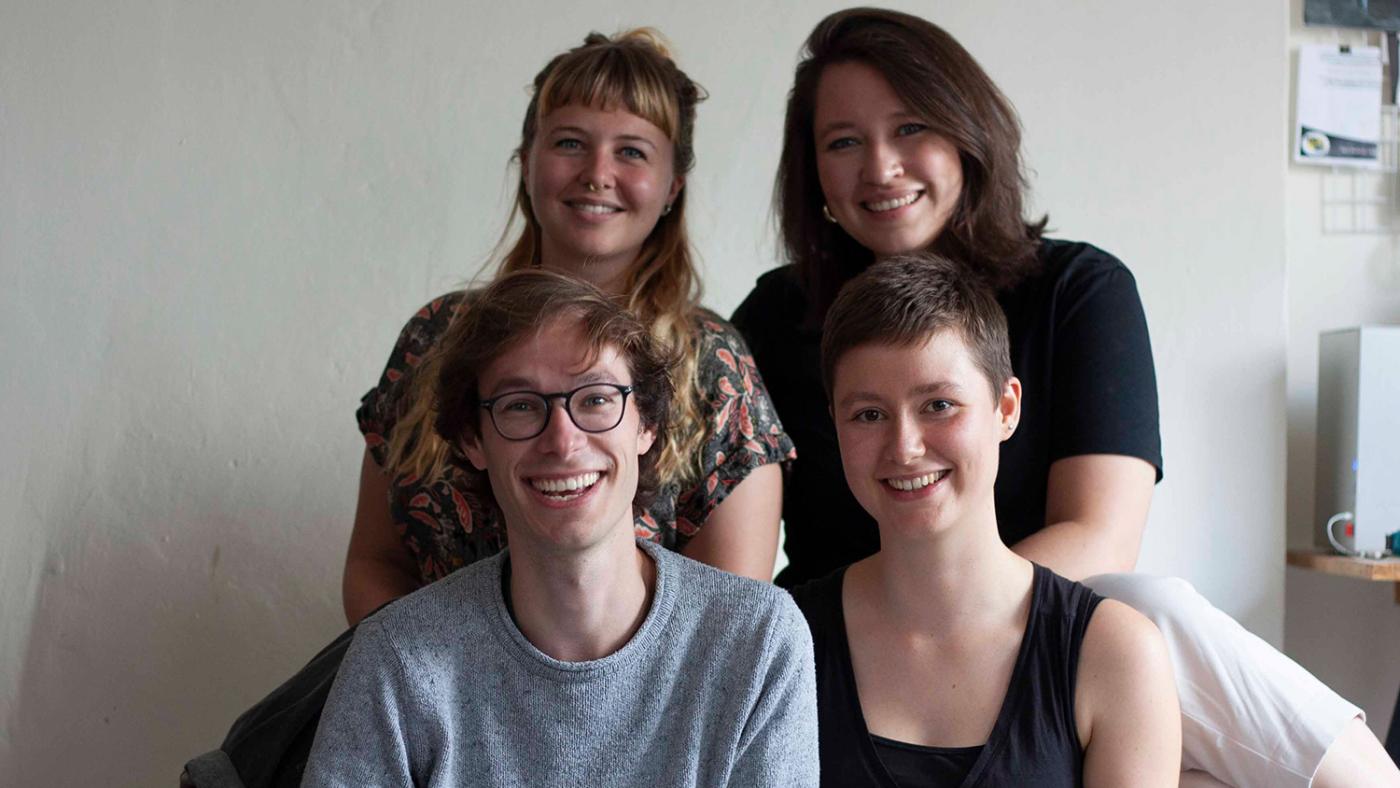Art platform Paratext makes publishing easy for students

The platform was founded last year with the aim to provide students with a place to showcase their work. Paratext also hopes to stimulate students to create, with a publication as a goal in mind. “We noticed that people wanted to write, but that their ideas are often filed away and forgotten”, says Saskia.
Saskia Soelaksana and Pauw Vos founded the platform together. At the time, they both did their bachelor’s in English Language & Culture. Pauw was the first one to come up with the idea and, at the insistence of an enthusiastic Saskia, sat down with her to discuss the foundation of the platform. Here they are now with the 14 months old platform and a team of five editors, including Saskia and Pauw who are currently doing the master’s Comparative Literary Studies.
Together they hope to make the art and literature world more accessible, especially for students. “Many people find it hard to show the product of their writing to the world. This can be quite scary. We want to offer a safe space for people who want to take these first steps. We help them with editing, give feedback and show them that you don’t have to be established to do good writing”, says Pauw. “But if you happen to already have been published, this is not a problem. We published Mia You, for example”. You is apart from a tutor at Utrecht University also a published poet. Though the platform was initially founded to publish students, nowadays also publications of non-students can be found on the website.
A platform for creative writing was still missing
Paratext wants to make the division between student’s personal interests and their academic study disappear. “At university you learn theories and gain a certain perspective on the world, which you subsequently only apply on the university curriculum,” says Pauw. “What happens when you apply this knowledge gained at university at your own interests?”
Saskia explains that this is also the reason behind the name Paratext. “A paratext is a text surrounding another text. What else can you do around your study programme? How can you pursue and develop certain skills?”
An artsy, university platform, didn’t this already exist? “Of course you have student journals for academic pieces like Frame for literary studies and Junctions for humanities, but a creative one, where there is more space to do your own thing, that was missing at the university”, says Saskia. “Something where there’s space for poetry, short stories and opinion pieces, that kind of stuff”, adds Pauw.
“I get the idea that creativity is beginning to play a more prominent role at universities”, continues Pauw. “Also foreign universities start to embrace creativity, for example by accepting more creative ways to write your thesis”. One example of writing a creative thesis at UU is to opt for a creative writing thesis in which you produce your own creative writing.
Winners of the One Book One Campus competition
Every Thursday new content is published on the website of Paratext. This can be a guest contribution, but also the team themselves write for the platform. Yesterday the short story of the winner of the creative contest of One Book One Campus, which called for “creative reactions” to Ali Smith’s Autumn, was published: “The Scarecrows” by Veerle de Jong. The numbers two and three were published in the previous weeks. “We were so impressed by the level of quality of the winners”, says Saskia. “There is so much talent at the university of which there’s so little we get to see”.
Another example of an article that you can find on Paratext is “A World in Ruins”, written by Saskia herself. She had already written an essay before about digitalisation in the arts for a seminar at university. “That was a piece which was sitting with me for a while after the seminar. I rewrote it and edited in a way that it suited Paratext. It’s not academic and it’s not quite a column”. On the idea of it being a journalistic piece Saskia reacted with a surprised look. Hybrid then? The article is, just like the platform, hard to put a label on.
A little vague
The platform works with bimonthly themes. Right now this is still wunderkammer, from January on this is palimpsest: a piece of parchment that has been re-used, and which functions as a symbol for stratification. “Themes are useful when you want to request others to make something for the platform”, explains Pauw. “When we asked people to write something they often said ‘but what then?’”
Paratext is not only a website. In April this year the Publish it Yourself (PIY) event was organised. In just one day Paratext wrote, edited, designed and printed a book filled with stories together with seven others. Apart from that Paratext also made a zine (a photocopied and/or handcrafted magazine) and are planning to release one every quarter of the year starting next year.
Although Paratext started as an art platform, currently the whole team is connected to literary studies, and Dutch and English literary pieces seem to predominate on the platform. Also the PIY event and the zine seem to put emphasis on writing. So is it really an art platform, or a literature platform? “I think it’s nice that that’s still a little bit vague and everyone has the freedom to interpret that for themselves”, Saskia answers. “We’re very open to whatever comes our way.”